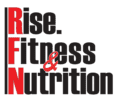Ever heard the mantra “burn calories for your fat loss? Work out hard!” to transform your body? While exercise is crucial, focusing solely on the gym might not be the whole picture.
Understand Calories: A Simple Analogy
Think of a calorie as a unit of energy, like the amount of heat needed to raise water temperature by one degree. Calorie labels aren’t perfect, but they offer a good estimate.
Here’s the key: a calorie is a calorie. Whether it comes from fat, protein, or carbs, 100 calories hold the same energy value (although the food quantities to reach those calories differ). Why should you count calories? Find out here!
Imagine this: 1kg of concrete; it weighs the same as 1kg of lettuce, even though the density and the space taken by both to reach that weight is greatly different.
Also, curious to calculate your daily calorie goal? Check this out!

Your Body’s Burning Furnace: Always Working
Your body constantly burns calories, 24/7. It started the moment you were born and will keep going until the very end. This process has highs and lows depending on your activities, sure, but it never completely stops.

Fueling Your Own Fire: Beyond Exercise
There are several factors contributing to your metabolism, or your daily calorie burn, and they don’t all involve hitting the gym, you read it right. All of them contribute to what is called “Total Daily Energy Expenditure” or T.D.E.E. [source].
What are these factors?
- Basal Metabolic Rate (BMR): This is your primary calorie burner, simply for being alive and functioning. While it varies throughout life (does it slow down when you hit your 30s?? Read more here) and can’t be drastically increased, an active lifestyle can help maintain a slightly higher BMR. Your BMR can be estimated with formulas and it’s based on your height and bodyweight. This accounts for about 70% of your TDEE.
- Exercise-Associated Thermogenesis (EAT): This refers to the calories burned during any physical activity. Of course exercise plays a role in your daily calorie burn, just much smaller than you’d expect: about 5% of your TDEE.
- Thermic Effect of Food (TEF): Digestion burns calories too. Protein requires more energy to break down, so a higher protein intake leads to a slightly increased burn, but this effect is relatively small. This accounts for about 10% of your TDEE.
- Non-Exercise Activity Thermogenesis (NEAT): The unsung hero of calorie burning! This refers to the calories you burn through everyday activities outside of formal exercise such as cleaning your house, walking to the grocery doing errands and others. This accounts for about 15% of your TDEE. Quite NEAT for fat loss uh?

Don’t Forget the NEAT for Fat Loss: Learn from My very own Experience
As someone who can work from home and has very convenient transportation options, I can easily fall into a sedentary routine without actually realizing it. I take care of my nutrition, I lift weights everyday but I don’t necessarily move around much unless I purposely do so. My NEAT can become very low and I can feel restless and stressed without understanding why unless I pay attention.
One day it dawned on me when I checked the number of steps I walked during a work week and I realized that the daily average was around 3,000 steps which is very low. I needed to take action.
Tracking and Small Improvements: The Keys to Success
Just like any journey, tracking small progress is essential to make sure you are going in the right direction. In my case, if tracking reveals a low daily step count I take action to move more when I’m home and to walk extra steps when I run my errands on the day. Small improvements go the long way

NEAT: The Missing Puzzle Piece
Whether you’re on a fat loss journey or simply wanting to improve your daily routine, but you have a sedentary lifestyle, even intense daily workouts might not be enough.
Sitting for most of the day can hinder your progress and make your calorie deficit slightly harder or make you feel restless. Use your NEAT for fat loss, move your body!

How to Boost Your NEAT: Small Steps, Big Results
Now that you know the importance of your NEAT, how can you boost it? Here are my advices:
- Be mindful of movement throughout the day: Take the stairs instead of the escalators or the elevator (when you can), walk to get water at home or in the office, do chores around you house, walk while talking on the phone.
- Embrace the outdoors: Walk one extra train/bus station to go home after work, bike to commute (wear your helmet!!)
- Integrate movement into your routine: add post-workout cardio, walk around to find new coffee shops in your neighborhood over the weekends. Take any chance to move as the right chance.
What I personally do:
- Walk longer route to the gym/grocery/local coffee shop.
- Use the treadmill and add 20-30 minutes of fast walking to reach my steps goal and to feel good.
- Take a short walk after my lunch break when in the office.
- Walk while talking on the phone

If you have been reading my articles, I’m sure you very well know by now that focusing on small, consistent adjustments can yield significant results over time.
Persistence is key, just like a single drop of water can eventually carve a hole in rock, you don’t need to go all-in, just adjust your daily habits and change will follow.
